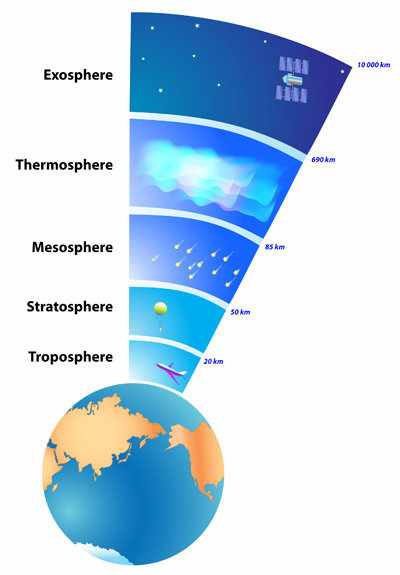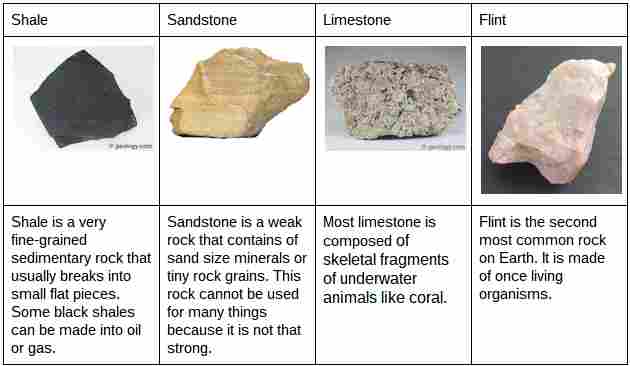Key Points in Geography
Quotes for Students

Too often we underestimate the power of a touch, a smile, a kind word, a listening ear, an honest compliment, or the smallest act of caring, all of which have the potential to turn a life around - Leo Buscaglia
The most important things we can give to others are actually not expensive. In fact, we don't have to buy them with money because they are right within us.
These include our kind words, listening ears, honest compliments, our 'thank you', those beautiful smiles, our loving corrections, sincere kindness and a caring heart
In the end, it isn't the years in your life that count. It is the life in your years - Abraham Lincoln
One fact remains constant to us all, and that's death. We are not guaranteed of tomorrow because no living human is too old to die, even a newly born. Remember, age is also a number.
Therefore, let us always do good, help the poor, care for the sick and less privileged, forgive transgressions and most importantly, extend the hands of love to everyone we come across.
By doing this, we would have added an abundance of life to our years, regardless its number. Recall that Jesus Christ Himself died at 33

You cannot win everytime. This therefore makes defeat a part of life. However, it is the way and manner at which we rise from our defeats that determines our place among the greats.
Muhammad Ali was a professional boxer with 56 wins and 5 defeats. However, the way and manner at which he rose from his defeats secured his place in boxing history as the greatest fighter of all time
One Day or Day One, you decide - Unknown
We all intend to become great in life. However, we should also understand that it doesn't take one day to become great. Rather it takes many days of work, practice, diligence, failures and successes to become great.
My question to you is this: Concerning your path to greatness, what day are you in?
Whatever you are, be a good one - Abraham Lincoln
If you are a boy, be a good boy. If you are a girl, be a good girl. If you are a man, be a good man. If you are a woman, be a good woman. If you are a student, be a good student. If you are a teacher, be a good teacher.
I can go on and on; but the point is: You are human, so do all in your power to be a good human
Planets can be categorized based on their composition. These include:
1. Terrestrial or Rocky Planets: They are mercury, venus, earth and mars. They are called terrestrial or rocky planets for the following reasons:
They have a rocky and compact surface.
They have no rings around them.
They have a few natural satellites.
They rotate slowly around their axis.
2. Gas or Jovian Planets: They include jupiter, saturn, uranus and neptune. They have the following features:
They are called jovian planets because they are bigger in size when compared to earth.
They are composed mainly of hydrogen and helium gas, hence the name 'gas planets' or 'gas giants'.
They rotate rapidly.
They have many satellites.
They have rings around them.

The following rules are required for a body to become classified (or regarded) as a planet:
It must orbit the sun.
It does not orbit another planet. This means that it must not be a satellite.
It must have sufficient mass which accounts for its self-gravity.
It must assume a nearly round shape.
Earth's atmosphere is extremely important for the survival of all its inhabitants. As a student, it is important you comprehend how the above functions of the atmosphere support life. The explanations below give credence to this fact.
When one moves further away from earth, the atmosphere becomes thinner until it disappears into the outer space. There is no atmosphere in space. For this reason, astronauts will always wear a spacesuit while carrying along their oxygen gas masks and canisters when in space.
People living on very high altitudes will likely experience a reduced amount of oxygen in the atmosphere. Such people survive because their bodily organs become adapted to survive in such conditions.
On mountain everest for instance, mountain climbers will need to carry oxygen canisters because lesser amount of oxygen is present on this mountain.
The interface forming the boundary between two atmospheric layers are always named with a 'pause' at its end; for instance;
Tropopause: This is the interface or boundary between the troposphere and stratosphere.
Stratopause: Interface between the stratosphere and mesosphere.
Mesopause: Interface between the mesosphere and ionosphere.
Ionopause: Interface between the ionosphere and thermosphere.
The atmosphere surrounding the earth is layered. Each layer has its own characteristics although the boundaries between them are not clearly defined.
The image below shows the different layers of the atmosphere:


The average distance between the earth and the sun is about 149.6 million kilometers. It will take the earth 365 one-quarter days (or 1 year) to make a complete orbit (or revolve) round the sun. This process is termed the revolution of the earth.
The revolution of the earth is responsible for the seasonal changes we experience here (on earth). In Nigeria and Africa at large, these are the rainy and dry seasons. In Europe, these are spring, summer, autumn and winter seasons. Similarly, the United States of America have got the spring, summer, fall and winter seasons respectively.

The solar system is defined as a system comprising the sun, all the planets that revolve around it including their moons, the comets, meteoroids, asteroids and interplanetary medium.
In summary, the solar system comprises of the followings:
Sun
Stars
Planets
Moons or Satellites
Comets
Meteoroids
Asteroids
Interplanetary Medium (IPM)
The atmosphere consists of gases that surround the entire surface of the spherical shaped earth. The compositions of these gases are as follows:

All of these gases (listed above) make up the atmosphere and are generally called air.
Please read more on the atmosphere and it's composition here
Human Geography focuses on the study of human beings, their origin, race, and how they are affected by the earth.
Human geography can be divided into the following branches:
Economic Geography: This aspect of human geography looks into the distribution of goods and services. Distribution of wealth across the globe is also considered here.
Instances of economic geography include a study or research done on the richest nations on earth. During thus research, the processes accounting for their wealth are ascertained.
Religious Geography: It studies the origin and spread of religious groups including their beliefs.
Instances of religious geography include the study of the Christian or Islamic religion as seen in documentaries.
Medical Geography: It studies the processes and events that bring about diseases and epidemics with regards to their geographical location, origin and distribution.
As an instance, you may have heard about the geographical study and distribution of the disease 'COVID-19'. (Coronavirus is a case study here).
We have 3 main types or classes of rock based on how they are formed. These are:
1. Igneous Rock

2. Sedimentary Rock

3. Metamorphic Rock

Igneous rocks are formed when molten substances below the earth surface cools down and solidifies. These molten substances are called magma or lava. Magma can be derived from melting of existing rocks on the earth crust.
The solidification of molten magma into igneous rock may be below the earth's surface (intrusive) or on the earth's surface (extrusive), giving rise to the two types of igneous rock.
Intrusive Igneous Rock: These are igneous rocks that crystallizes below the earth’s surface. They generally cool slowly during the process of solidification and tend to produce large crystals.
Intrusive Igneous Rocks are also referred to as plutonic igneous rocks. Examples are gabbro, granite and pegmatite.
Extrusive Igneous Rock: They are igneous rocks that form when molten magma erupts on top of the earth's surface. They cool down and solidify quickly, producing small crystals in the process. Sometimes, the molten magma cools so quickly, allowing no time for crystals to grow. This rapid cooling results in the formation of an amorphous glass.
Extrusive Igneous Rocks are also referred to as volcanic igneous rocks. Examples are basalt, rhyolite and scoria.
Sedimentary rocks amount to about 76% of the earth's surface. They can be formed in different ways. These are:
By the deposition of the weathered remains of pre-existing rocks and their subsequent transportation and deposition. Sedimentary rocks formed in this way are known as clastic sedimentary rock.
By the accumulation and lithification of sediment or detrital rock.
By their precipitation from solution. Sedimentary rocks formed in this way are known as chemical sedimentary rock.
As a result of biogenic activities. Sedimentary rocks formed in this way are known as organic sedimentary rock.
Total Topics (13) Paged
Page (1 of 2)
Academic Questions in Geography
Which of the following is not a branch of environmental geography?
A. Physical Geography
B. Hazards
C. Political Ecology
D. Environmental Perception
E. Landscape Studies
F. Energy and Resource Geography
Geography
Sandstone is an example of _____ .
A. Sandy soil
B. Loamy soil
C. Clay soil
D. Igneous rock
E. Sedimentary rock
F. Metamorphic rock
Geography
Which of the following isn't an example of metamorphic rock?
A. Schist
B. Quartzite
C. Gabbro
D. Marble
E. Slate
F. Serpentinite
Geography
Which of the following statements is false concerning metamorphic rock?
A. The are less dense than igneous and sedimentary rocks
B. They can be foliated or non foliated
C. They are crystalline in nature
D. They have a more coarse texture than their protolith
E. They may be formed from an older metamorphic rock
F. They are characterized with precious metals and stones
Geography
Earth's distance from the sun is approximately _____ million kilometers.
A. 147
B. 85
C. 40
D. 220
E. 309
F. 400
Geography
Which of the following is not a branch of physical geography?
A. Economic Geography
B. Religious Geography
C. Social Geography
D. Resource Geography
E. Settlement Geography
F. Industrial Geography
Geography
Water resource geography is a branch under physiography.
A. True
B. False
Geography